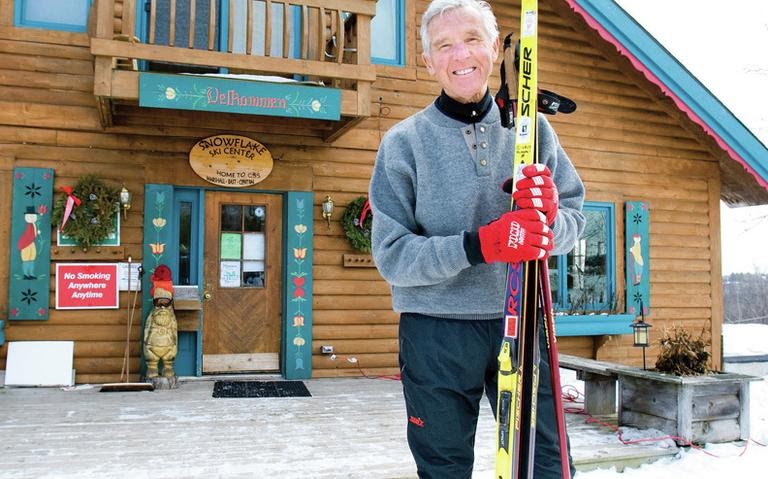
George Hovland was convinced that skiing saved his life. What is known for certain is that Hovland dedicated his life to skiing.
Credited as a pioneer who championed the cause of both downhill and cross-country skiing in the Northland region of Minnesota, Hovland, a former United States Olympic cross-country ski racer, died on May 9th from complications that arose following hip surgery that was the result of a fall Hovland took two weeks earlier. He was 94 years old.
Ski racing is a major part of the Winter Olympiad. Wagering on Winter Olympic sports such as alpine and cross-country skiing is prevalent at all of the major Canadian betting sites during the Winter Games.
A Natural Skier
Hovland took to the snow at a young age and was a natural with skis strapped to his boots. And he was willing to try any form of skiing that was out there that was available in which for him to partake.
By the age of 11, he was launching himself off the Big Chester ski jump in Duluth. Hovland was equally adept at slashing his way through a challenging downhill run as he was at traversing a lengthy nordic trail. “He felt so great when he was moving on a trail,” his wife Jane Hovland told the Duluth News Tribune. “He just loved being outdoors.”
He continued to ski throughout his life, both alpine and cross-country. As recently as March, Novland was still charging along the trails he designed at Snowflake Nordic Center, at the ski resort he owned. He was also still attacking the slopes at Spirit Mountain, a ski complex he helped to establish and at Giants Ridge in Biwabik.
“George has been instrumental in the advancement of downhill and cross-country skiing in the area,” Jim Wood, Chief of Trails at the Snowflake Nordic Ski Center, told KBJR6.com.
“His fingerprints are on just about everything involved in cross-country skiing in the city,” longtime friend and fellow skier Gary Larson said.
Olympic Dreams
In 1952, Hovland earned a spot on the U.S. Olympic cross-country ski team that would compete that year at the Winter Games in Oslo, Norway. He would finish 12th in the 4x10km relay race and 71st in the 18km race.
Following the Olympics, Hovland never really never stopped competing. He raced in every American Birkebeiner, save one, from its inception in 1973 through 2012, when he was the age of 85. Hovland won his age group in that race more than 10 times.
He was also the first non-European to compete in the Vasaloppet Race in Sweden, an event that covers over 90 km. He was a four-time winner of the Central US four-event championship.
Hovland helped to design the cross-country ski trails at Giants Ridge, which in 1985 played host to Minnesota’s first and so far only International Ski Federation’s Cross-Country World Cup event.
“He brought back this love for the sport that he saw when he was traveling in Europe and competing,” Larson said.
Giving Back To The Ski Community
Serving in the U.S. Navy during World War II, Hovland worked as a quartermaster on a geodesic survey boat. They were tasked with checking out islands and atolls to determine the more suitable location for a marine landing.
After surveying Bikini Atoll, where nuclear weapons tests would later be held, Hovland turned down a promotion and returned to Minnesota to ski. He’d later claimed skiing saved his life, keeping him from being exposed to all of that radiation.
Hovland opened Duluth’s first ski shop and first commercial downhill slope. However, it was bringing newcomers to skiing that provided Hovland with his most joy. He and his wife helped launch the KidSki program in the area to introduce youngsters to the sport.
Snowflake became the epicenter for high school cross-country ski teams to train after classes concluded and Hovland was always around to offer a helping hand. “He’d be there at 4 because he loved to be around the kids and he was really good to them,” said Bonnie Fuller-Kask, head coach of the Duluth East High School Nordic ski team. “He was friendly with them. He was interested in them. He’d give them pointers.
“I think seeing a person like him around gave kids the idea that skiing doesn’t end when you graduate high school. I think that is a big thing he taught.”



